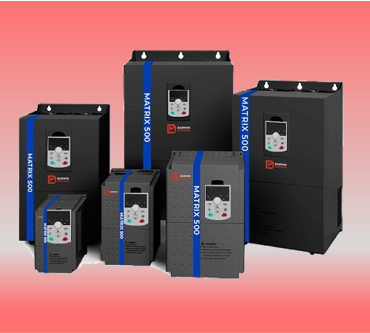Posted on 7th Oct 2024

Induction motors are a cornerstone of industrial and commercial applications, powering everything from conveyor systems to pumps and fans. However, traditional methods of controlling these motors often lead to inefficiencies, particularly in varying load conditions. Enter variable frequency drive (VFD) technology, which has transformed the way we control induction motors. This article explores the principles of variable frequency control, its advantages, and its applications in various industries.
Variable frequency control involves adjusting the frequency and voltage supplied to an induction motor, allowing for precise control of motor speed and torque. A high frequency drive converts the fixed frequency and voltage of the power supply into variable output that can be tailored to meet specific application needs. This flexibility is essential for optimizing performance across a wide range of operating conditions.
At the core of a VFD are three main components:
Rectifier: Converts incoming AC power to DC.
DC Bus: Smooths the DC voltage and stores energy.
Inverter: Converts the DC back to AC at the desired frequency and voltage.
By altering the output frequency and voltage, the VFD can control the speed of the induction motor, enabling it to operate efficiently at different loads.
One of the most significant advantages of using VFDs is the substantial energy savings they provide. Induction motors often run at a constant speed, which can be wasteful if the application does not require full power. VFDs allow motors to operate only as needed, reducing energy consumption by 20% to 50%.
VFDs enable precise speed control, which is crucial for applications requiring accurate motion control. This capability improves overall system performance, particularly in processes where maintaining specific speeds or torque levels is vital.
Starting and stopping an induction motor at full speed can impose significant mechanical stress on the system. VFDs mitigate this issue by providing smooth acceleration and deceleration, thereby extending the life of the motor and reducing maintenance costs.
By improving energy efficiency and reducing wear and tear, VFDs contribute to lower operational costs. This is particularly beneficial in industries with high power demands, where even small savings can lead to significant cost reductions over time.
Modern VFDs come equipped with advanced control features, including overload protection, fault detection, and programmable settings. These features allow for better integration into automated systems, enhancing overall operational flexibility.
In heating, ventilation, and air conditioning (HVAC) applications, VFD Drives regulate fan and pump speeds based on real-time demand. This not only improves comfort levels but also leads to substantial energy savings.
In water treatment plants, VFDs help manage pumps and blowers, ensuring optimal flow rates and reducing energy consumption. This is crucial for maintaining efficient operations in facilities that require constant monitoring.
Many manufacturing processes rely on conveyor systems, mixers, and other equipment that require precise motor control. VFDs provide the flexibility needed to adapt to varying loads and production demands.
In renewable energy applications, such as wind and solar power, VFDs control the speed of generators and help optimize energy conversion, contributing to more efficient energy production.
While the benefits of VFDs are clear, several factors should be considered when implementing this technology:
Ensure that the induction motor is compatible with VFD technology. Not all motors are designed for variable frequency operation, so it’s essential to verify specifications.
VFDs can introduce electrical harmonics that may affect power quality in the system. Proper installation of filters may be necessary to mitigate these effects and ensure stable operation.
While the initial investment in VFD technology can be significant, conducting a cost-benefit analysis can help determine the potential return on investment through energy savings and reduced maintenance costs.
Proper training for personnel on VFD operation and maintenance is crucial for maximizing the benefits of this technology. Investing in training ensures efficient and safe operation.
Darwin Motion Variable frequency control for induction motors represents a powerful tool for enhancing efficiency and performance in various applications. By enabling precise motor control, reducing energy consumption, and minimizing mechanical stress, VFDs are transforming the landscape of industrial and commercial motor applications. As industries continue to prioritize energy efficiency and operational excellence, the adoption of variable frequency drives will only grow, making them an essential component of modern motor control systems.